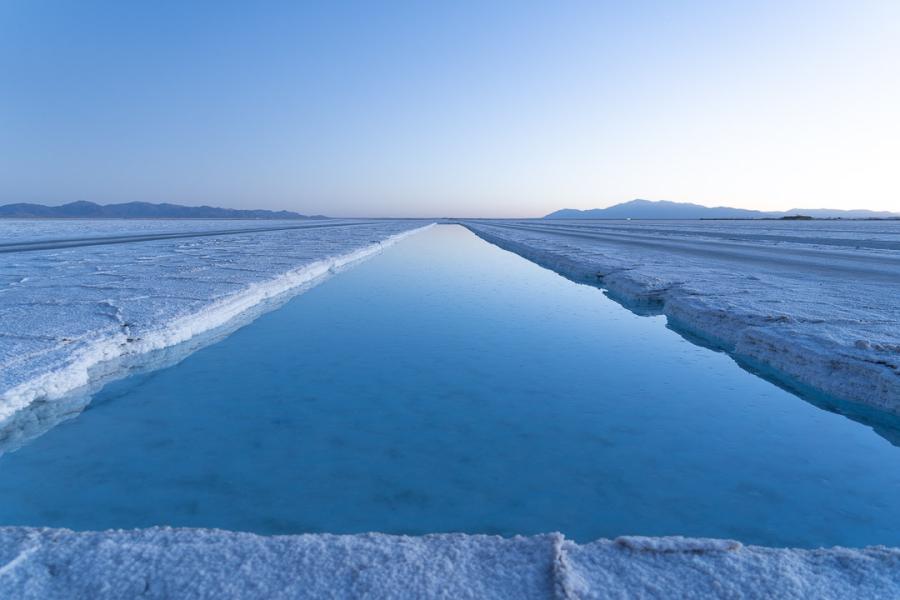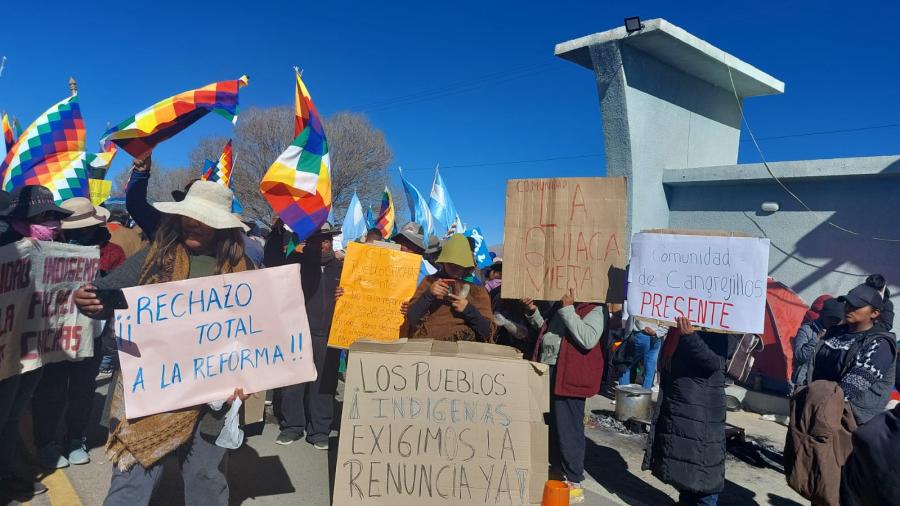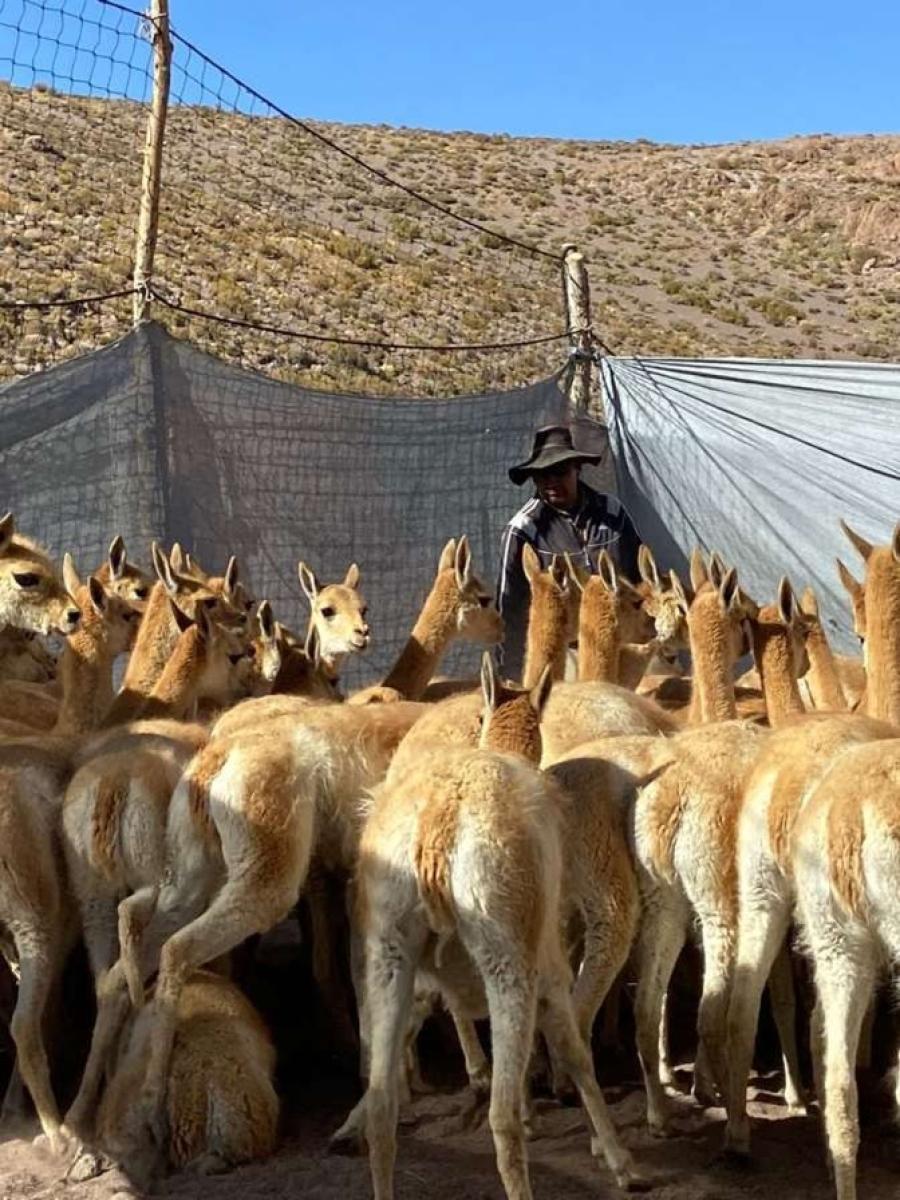The situation of indigenous peoples in Argentina has attracted far less attention than that of Indians in Brazil, the other South American colossus where indigenous peoples are a tiny minority of the population. By the end of the nineteenth century, Argentine Indians were surrounded by and at least partially incorporated into the larger economy. In contrast with Brazil, Argentina's Indians today occupy largely marginal lands coveted only by immediate neighbors, not by national and multinational interests. In recent decades, too, Argentina has followed a different path in its state policy toward indigenous peoples - one which, with the proper economic support, could serve as a model for indigenous affairs elsewhere in Latin America.
Beginning in the 1950s, Argentina decentralized state authority over indigenous peoples, passing it on to the provincial level. This set the stage for a significant new process in the evolution of Argentine state indigenous policy in the democratic period of the 1980s: the state established a series of Indian Institutes at the provincial level. These institutes often had boards of directors largely or exclusively composed of Indians and democratically elected by the indigenous peoples of the province, and legislative mandates addressing a broad range of the economic and social issues affecting Indians. Led by northeastern Formosa Province in 1983, Indian Institutes have since become law or have been introduced as bills in provincial legislatures in Chaco, Río Negro, Nequén, Salta, and Misiones. These institutes usually replaced more traditional Indian agencies whose primary purpose was to integrate Indians into the economy and maintain dependency.
For most of the national period, Argentina's Indian policy has had little to distinguish it from those policies elsewhere in Latin America. Indian peoples of the central and southern part of Argentina were definitively subjugated in 1879 in the famous "Desert Campaign," which was followed by the conquest of the Indian peoples of the Gran Chaco in the northeast in campaigns in 1884 and 1911. These campaigns and subsequent economic expansion pushed Indians into the most remote and ecologically inhospitable areas of Argentina; most of the Indians who have not migrated to the cities remain there. According to the last national Indian census in 1976, 342,445 Indians - less than one percent of the national population - were concentrated in thinly populated provinces such as Río Negro, Nequén, Tucumán, Catamarca, Santiago del Estero, Jujuy, Salta, Formosa, and Chaco, where they form an impoverished rural underclass as below-subsistence producers and rural proletariats. The Argentine federal government has shown little sustained interest in Indian affairs, and has made only modest attempts to formally integrate Indians into the national economy as cash crop producers.
After the period of subjugation, Indians received only sporadic national attention, usually sparked by a massacre of Indians or a labor problem, until the first presidency of Juan Domingo Perón (1946-1955). Under Perón, Indians experienced a burst of beneficence in the form of tools, clothing, and credit. As part of his populist strategy, Perón incorporated Indians into the category of descamisados, or "shirtless ones" - the idealized but coopted working class on which he based his revolution. Records from the period show that, for the first time, many Indians wrote and traveled to Buenos Aires looking for assistance. Even today, sagging fences originally strung up during the first Perón period still stand in some Indian colonies.
In the meantime, Indian administrative affairs went through wild gyrations. After decades of somnolence under the Comisión Honorario de Reducciones de Indios, first established in 1916, Indian administration was rapidly reshuffled during the Perón period. In 1946, Indian affairs went to a new agency, the Direccion de Protección al Aborigen with little notable impact on Indian policy; Indian issues subsequently went through three different, larger agencies during the Perón years. Although the outflow of goods continued, particularly during the early 1950s, little evidence exists that any of this served any useful development purpose, although it was unquestionably appreciated by the Indians (the largest Indian colony in Chaco Province was renamed Colonia Presidente Perón).
One of the lesser-noted consequences of Perón's 1955 fall from power was the fact that the new military government abolished the national office of indigenous affairs. By 1957 it had ordered a "provincialization" of Indian affairs - that is, a transfer of almost all administrative affairs to the individual provinces, a practice that continues to this day.
Events in the northeastern province of Chaco, which includes both semiarid and semitropical stretches are representative of the course of events in Indian affairs in Argentina. In Chaco, a provincial-level Directorate of the Aborigine was established in 1957, inheriting among other things the assets of the former Reduccion Napalpi, one of the oldest Indian colonies in northern Argentina. The directorate's primary function was to assist Indians in becoming cotton farmers; to this end, it provided credit in the form of food, tools, seeds, and marketing services. Except in their role as wage laborers, the directorate largely handled the relationship between the Indians and the larger society in a very paternalistic way. However, the "credit," usually disguised subsidies, probably did serve to keep many Indians who would otherwise have become completely dispossessed rooted to their home colonies.
The Chaco directorate also introduced many changes into the province's 54 recognized Indian colonies. In one important step, it brought Indian peoples into the increasingly mechanized world of Chaco agriculture by giving them access to tractors. This facilitated the plowing of cotton fields and also contributed to a terminal decline in the use of animal traction, exacerbated by an outbreak of equine fever in the late 1970s. When Argentina entered the political darkness of the military regime in 1976, however, Indian development largely stagnated except for some ill-conceived development projects in the remote, semiarid, impenetrable region of northwest Chaco, which benefited some groups of Mataco-Wichí.
It was not until the first year of the democratic government of Raúl Alfonsín that Indians and indigenistas at the provincial level began to assemble coalitions to find new forms of integration in which Indians would be guaranteed their autonomy. The idea of establishing new mechanisms to promote Indian self-governance also came about because concerned Argentine citizens felt that the weakness of civil society and the marginalization of the poor were among the root causes of authoritarianism in Argentina. As a result of efforts at the provincial level, the first provincial Indian Institute was established in northeastern Formosa Province in 1983. Although Indians made up only 7 percent of the population of Formosa, they were a much larger percentage in the arid reaches of western Formosa and constituted virtually the only population living along most of the Río Pilcomayo, the frontier with Paraguay. Because their animals, timber resources, and land all belonged to the state and they had to seek permission from the state before any of it could be used, Indians found it difficult to generate their own income. Thus, in the first month of the democratic government, the Institute de Comunidades Indígenas de Formosa came into being. Like most of the institutes that were to follow, the Formosan institute had a broad mandate to improve state services to Indian communities and to encourage their self-governance. In the case of Formosa, the highest mechanism of self-governance came from the institute's directorate, composed entirely of community-elected Indians. There were limits, however, to the Formosan concept of self-governance: the president of the institute must be a non-Indian and must be appointed by the provincial governor.
The democratic government that assumed office in Argentina in December 1983 represented the Radical Party, but many of the governorships and legislatures in the remote provinces where the Indians lived were dominated by Perónists. Although still a minority in these provinces, the Indians represented a voting bloc of some significance; establishing an Indian institute as a means of winning Indian votes thus became a motive for a new-found interest in Indian affairs by both radicals and Perónistas. Nonetheless, in most cases the institutes were successfully established only after years of lobbying and coalition building.
In the case of Chaco Province, the lobbying process began in 1984 when a new director of the directorate was appointed - the first with experience in development work. One of his first acts, in 1984, was to carry out a provincial Indian census, the first since 1965; this was conceived as much as a political act as a demographic one, and was a means of calling attention to the political importance of the Indian population. This census counted 24,554 Indians, the great majority being Toba, followed by Mataco-Wichí and Mocoví. Next, the census undertook a few modest initiatives within the restrictions of a straitjacketed budget: a program in rural and urban housing and the creation of new community associations, a renewed attempt to build the base for some organizational autonomy in Indian communities. The primary activity of the directorate remained, however, in the financing and marketing of the Indians' meager cotton crops, an activity that was largely a disguised subsidy to the Indian communities.
After years of battles, including opposition from some important Indian leaders who benefited from the existing arrangement, a demonstration in the streets of the provincial capital of Resistencia in May 1987 culminated in the passing of Law 3,258, the Ley del Aborigen Chaqueño ("Law of the Chaco Indian"), which established the Institute del Aborigen Chaqueño (IDACH). The law gave legal recognition to all Indian community associations, free titling - both individually and collectively - of all lands currently occupied by Indian communities, bilingual and bicultural education, the designation of Indian health promoters, and established health centers and improved housing in the Indian communities. IDACH is governed by an executive council composed of two Tobas, two Mataco-Wichís, and two Mocoví, all democratically elected from opposing states by the Indian communities. This council then appoints an Indian president who is approved by the governor, thus placing Indians at higher levels of decision making than in Formosa Province. In Chaco Province, non-Indian expertise is confined to a group of advisors, none of whom have direct administrative authority.
As a result of elections held in July 1988, Orlando Sánchez, a Toba and author of several works on Toba folklore became the first Indian president of the institute, a historic step in the political autonomy of the Chaco Indians and for the Indian peoples of Argentina.
Indian Institutes are currently operating in Formosa, Chaco, Salta, and Tucumán; the legislation has only recently been passed in Río Negro and Missiones. In most cases the legislation took years to approve. In Misiones, which has a tiny population of Guaraní-speaking Indians, the major opposition to the institute came from the Catholic Church, which argued that institutes put government officials in charge of the Indians, depriving the Indians of their liberty. Other observers argue that the Church is only afraid of losing its own traditional patronage of some Indian communities.
The Indian Institutes are an important administrative innovation in Argentina. Administrative authority without sufficient resources to run at least the bare minimum of sufficient programs is a recipe for recriminations and interethnic strife, however. As Argentina currently staggers into one of its worst economic and political crises in decades, the funding of the new Indian Institutes is not likely to be a high priority. As Carlos Benedetto, former director of the Chaco Directorate and now an advisor to IDACH, has noted, "First we had to struggle for the law, now we have to struggle for the budget." The struggle will be an extraordinarily difficult one under the current circumstances, and it may be some years before there are sufficient resources for the institutes to meet their potential.
Article copyright Cultural Survival, Inc.



